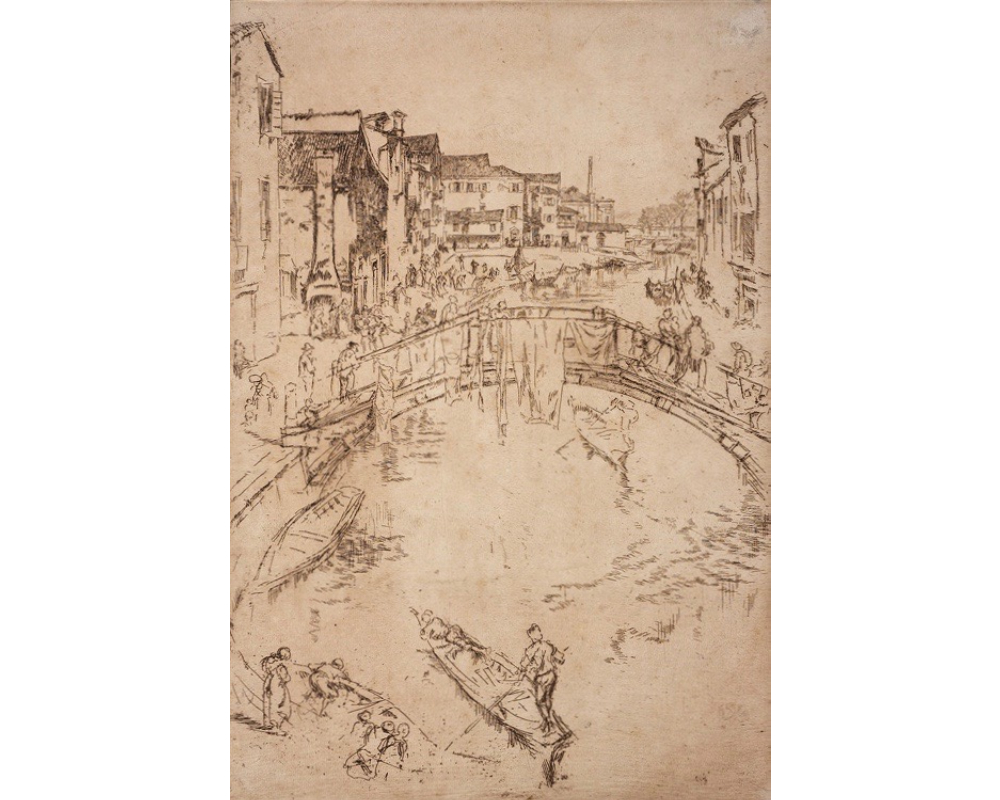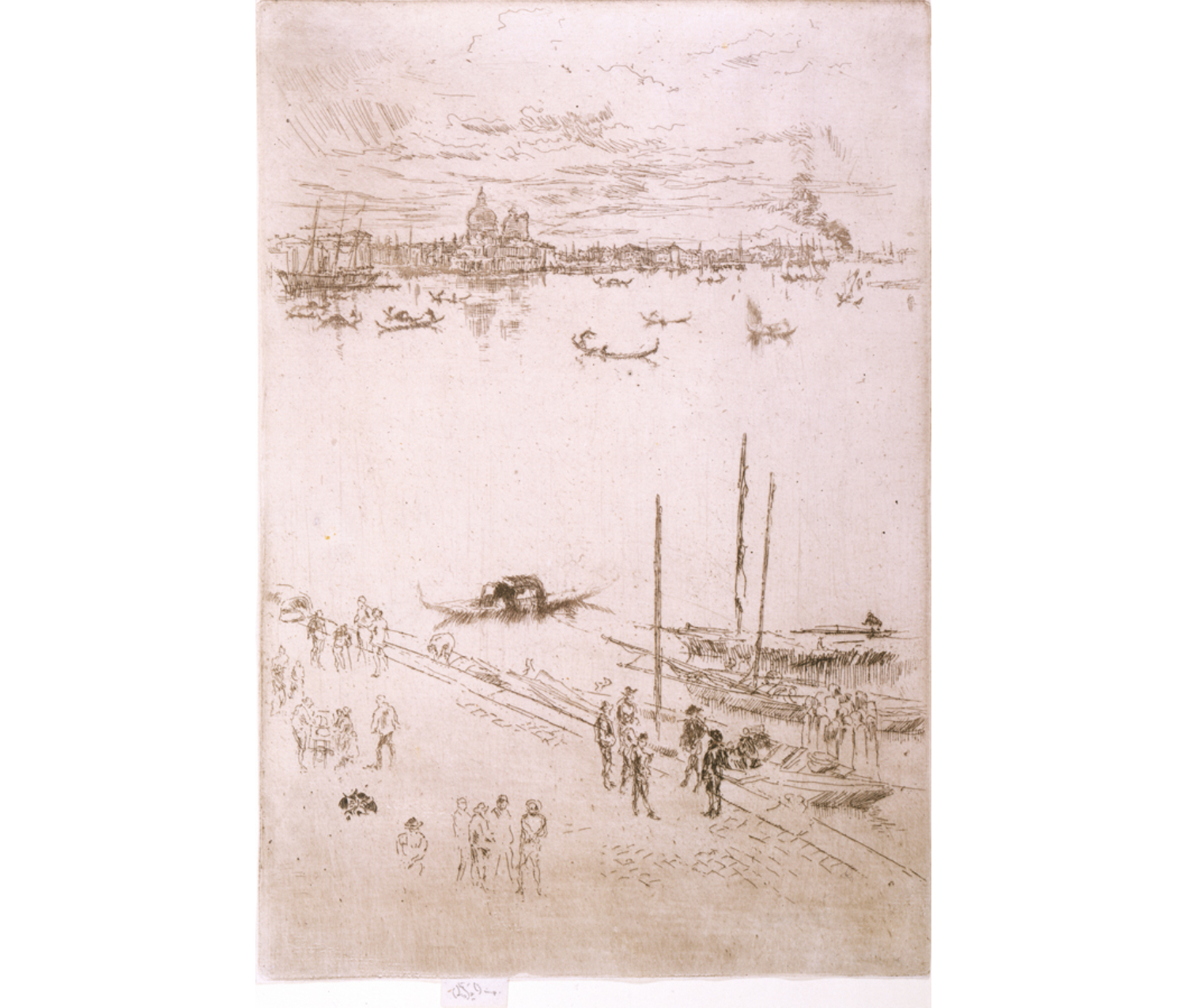
Whistler's Venice Set
Amanda Shubert is the Brown Post-Baccalaureate Curatorial Fellow in the Cunningham Center for the Study of Prints, Drawings, and Photographs.
This summer’s corridor exhibition is Image and After-Image: Whistler and Photography, on view until September 30, 2012. Featuring 20 prints and photographs from the permanent collection, Image and After-Image looks at James Abbott McNeill Whistler’s etchings and drypoints alongside the development of photography in the second half of the nineteenth century.
In 1879, Whistler accepted a commission from a London gallery to execute a dozen etchings of Venice over a three-month stay. Whistler lingered in Venice for fourteen months, producing over fifty prints as well as some paintings and pastels. The etchings were collected in two sets, known as the First Venice Set (1880) and the Second Venice Set (1886), and they represented a turning point in Whistler’s career. Doing away with any last remnants of anecdotal realism, these impressionist prints evoke a sense of everyday life in Venice using a spare and expressive visual shorthand. With the Venice Sets, Whistler began cutting his sheets at the plate mark, leaving only a tab for his trademark penciled butterfly signature denoting that the impression was printed by him.

James Abbott McNeill Whistler. American, 1834–1903. Upright Venice from the Second Venice Set, 1879–80. Etching printed in black on paper. Purchased. Photograph by Petegorsky/Gipe. SC 1969.45.
Upright Venice is among the first etchings Whistler made upon his arrival in Venice in 1879. He touched it up months later, adding the waterfront scene at the bottom and more gondolas in the distance. The lightly bitten lines, printed in brownish-black ink, are so delicate they have the effect of embroidery, echoing the fibers of the woven cream paper. Whistler also toned the sheet with a faint veil of ink to evoke the fall of light and shadow.
The vertical composition of the etching, which recalls a Japanese print or scroll, creates a gentle spatial disorientation. The waterfront in the foreground and background appear as two free-floating planes, with the empty expanse of the water between anchored by the gondolas and their shadows. Although the skyline panorama is topographically accurate – it shows the buildings around the Church of Santa Maria della Salute as seen from a window across the San Marco basin waterway – the focus is on atmosphere rather than historical monuments or picturesque landscape.